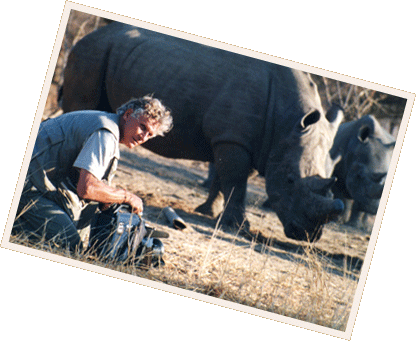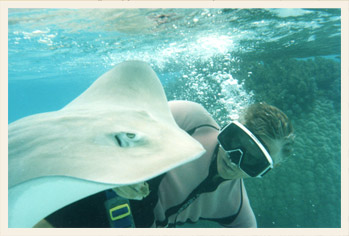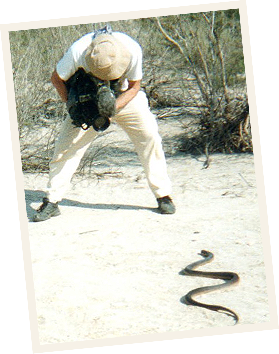| Highlights in an adventurous film-maker's life |
I must have been born under a lucky star: I was two years old when a V2 missile, deployed over my city by Hitler, blew up the house next-door. Glass from the windowpanes in my bedroom tore my cradle to bits; I dodged this meeting with the dictator. I was 'on an outing' that morning. At the time I was unaware that I would encounter half a dozen other dictators. When I was thirteen, my mother, who was an artist, lent me her 16mm camera.
I had a vague feeling that the content was lacking: little did I know that I was going to have no shortage of life experience to provide it. At the end of the sixties, cultural turmoil in California turned my world upside-down, developed my creativity and whet my appetite for exploring every possibility and every aspect of Mankind. An encounter with the beatnik Allen Ginsberg - my film (« Adventure in Hippyland ») and with Masters such as Krishnamurti, and Deshimaru contributed to my hunger. Student protests against the Vietnam War intensified my refusal to be
indoctrinated. In war-torn Bangladesh, encounters with Mother Theresa's radiant compassion, raised my level of consciousness and taught me lessons in humility. I needed to put my camera not only to the service of broadening awareness, but also to exposing injustice, exploitation, lies and revolts in the somewhat obscure 20th century.
During the 70s, I felt strongly about the heavy-handedness with which the military were silencing Latin America. In its schools in Panama, the CIA was training dictators. My film (« Militaries of the Americas ») was shown at the Bertrand Russell Tribunal on Repression in Latin America. I gave voice to oppressed rebel Indians (« Revolt of the Red Ponchos »)
at an altitude of 4 000 meters in the Andes. They agreed to act out the role
they had played in their conflict with their landlords and the military, in
the form of a psychodrama.
A few years later, I dissected the Dominants (African kings, sultans, sheiks, Latino American dictators, Papu big men, oriental aristocrats etc.) by filming how they theatrically demonstrate their authority, and especially by filming the paradox of their power (Collection of 12 episodes (« The Hidden Worlds of Power"»). Every society has its own logic. I tried to make foreign cultures more comprehensible to us. During these ten years, I shared intimate moments with forgotten people in little-explored corners of the earth. Little did I know that they were setting the scene for my fictional screenplays. I was continuously living on the razor's edge during these shoots: crossing parts of New Guinea amidst warring tribes, filming in harems in the Yemen or Bihari concentration camps in Bangladesh, or being present at the sacking by vandals of an ancient Nepalese city, Bhaktapur.
I continued filming trance, possession, shamanism and ecstasy rites in an attempt to understand their mechanisms. To this day, I am intrigued by Plato's 'Myth of the Cavern'. All we can see is our shadows. We believe that they represent reality, when in actual fact it goes way beyond that. Outward appearances do not necessarily represent truth. The most unbearable experience was filming the excision and infibulation
of young Sudanese girls (« The Secret of their Body »). Try filming 'customary'
torture without showing any emotion!! It was necessary not only to
denounce this horror but also to understand the cause. The film resulted in
some African governments implementing banning laws (Kenya, Sudan, and
Senegal). The most traumatic experience was being shot at by the Salvadorian dictator's henchmen during an appalling massacre. Bullets whistled past my camera. The wounded were writing on the Cathedral walls in their own blood, "Revolution or Death" (« Salvador the Rule of Terror »). I was totally shattered after ten years filming people being battered, humiliated, tortured, and massacred. So I started looking for greener pastures, far from human conflicts. The greener pastures turned out to be the ocean blue. Consequently, with my partner, Mina, and for the next two decades, I started
making dramactic documentaries about young people, between the ages of 5 and 23, who shared
affectionate relationships with the wild animals they were raised with. This series travelled the world, and achieved high viewing figures.
I filmed the extremes of human relations, from the most loving aspect to the
darkest. Although I advocate the protection and respect of animals, I never wanted to
use militant discourse. Emotions hold more force. There was risk involved in filming these documentaries in the deep blue. As I learnt how to remain calm when tiger sharks swam straight for me, I would be able to confront sharks on land later on. Very recently, a charging herd of elephants miraculously stopped one metre in front of me. I saw this as a sign that I had to stop filming wild animals 'in close contact'. Today, having had my fill of adventures and emotions, I devote my time to realising my feature-length, fictional screenplays which have won awards in the United States. They relate stories of adventurous couples…of course! On my path, Jean Rouch, Frédéric Rossif, Junishi Ushiyama, Muriel Rosé and many others who will always hold a place in my heart, have provided me with means and independence. I greatly appreciate their complete confidence in me. Have I strayed from the goal I set myself more than forty years ago? The emotion which my films impart, the suffering of humans and animals brought to the fore, affections shared with those I filmed with, my stubbornness in bringing projects to completion, scepticism from some… It's all still there in marching order.
©All rights reserved - Etienne Verhaegen |
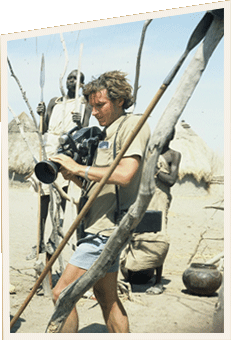 I decided to live a life crammed with magical moments.
I decided to live a life crammed with magical moments.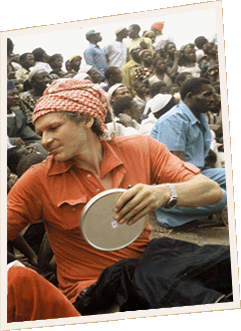 Almost… once this mission was accomplished (BA Pol. Sc., BA & MA Eco Sc.), I began studying film at Stanford University, then at UCLA. Meetings with Louis Malle, Roger Vadim and Samuel Fuller were key moments. Training in Lee Strasberg's "Actors Studio's method", and studies at the American Film Institute, completed my directing qualifications. 20 years later I would teach this method in my workshops: as true emotion is key in a film, so structure is fundamental in a screenplay.
Almost… once this mission was accomplished (BA Pol. Sc., BA & MA Eco Sc.), I began studying film at Stanford University, then at UCLA. Meetings with Louis Malle, Roger Vadim and Samuel Fuller were key moments. Training in Lee Strasberg's "Actors Studio's method", and studies at the American Film Institute, completed my directing qualifications. 20 years later I would teach this method in my workshops: as true emotion is key in a film, so structure is fundamental in a screenplay.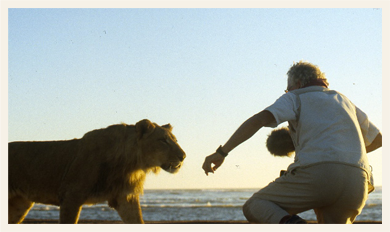
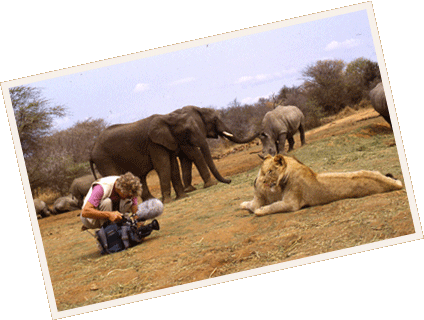
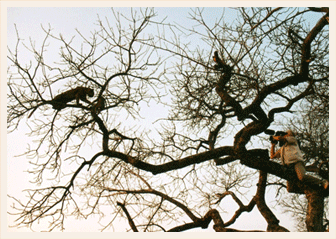 The most fascinating experience was the Haitian episode.
The most fascinating experience was the Haitian episode. 